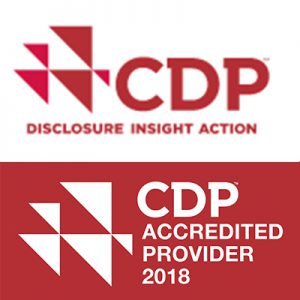In recent years, we have seen a shift in how businesses perceive environmental and sustainability work. Once thought of as a niche issue relevant to a small subset of stakeholders, sustainability has become increasingly mainstream. Organizations are facing increased pressure from investors and stakeholders to improve transparency, completeness and accuracy of publicly reported sustainability processes and data. The primary means of ensuring this accuracy is through third party verification.
What is Third Party Verification?
Verification of environmental data is an independent quality assurance that assesses the accuracy and completeness of data, reliability of data management procedures, and adherence to protocols and standards for calculating environmental metrics. Verification evaluates whether your greenhouse gas emissions data and other key environmental metrics are relevant, complete, consistent, transparent and accurate.

Verification is typically conducted to either a limited or reasonable level of assurance. A limited assurance results in a negative statement, which indicates that nothing wrong or unreasonable was uncovered. A reasonable assurance results in a positive statement, which indicates that the data assessed are correct. The two levels of assurance dictate the relative degree of confidence required to make a conclusion. A limited assurance is typically a desktop review of data and calculations, as well as in person or teleconference interviews of select staff regarding methods and procedures. A reasonable assurance is more detailed and would likely include multiple site visits and more comprehensive facility-level testing of environmental data.
There are a variety of verification standards available, such as AA1000AS and ISO14064-3. The standard you choose will depend on your business, as well as the intended purpose of the verification (e.g., CDP, GRI, customer request). A verification professional can help you select the appropriate standard.
Why Choose Verification?
The primary advantage of verification is to add credibility to data reporting. However, there are several other benefits to achieving verification of environmental data. The objective review of data by an experienced practitioner can result in the identification of errors or misstatements. This gives organizations an opportunity to continuously improve their data and data management processes. Verifiers often identify the largest and most resource-intensive facilities and activities during their review. Organizations can leverage this information to identify future opportunities to improve energy, water, waste and other resource efficiencies, and work to reduce their impact at these key facilities. Verification also provides confidence in base year GHG emissions, water withdrawals and other environmental data, allowing organizations to set targets and accurately track performance over time.
From a reporting standpoint, verification statements can be referenced in various reporting mechanisms, including a sustainability website or annual report. Several environmental reporting frameworks also encourage or require verification information, such as CDP, the Global Reporting Initiative (GRI) and The Climate Registry (TCR).
Finally, pursuing verification increases investor and stakeholder confidence in sustainability reporting and performance. Third party verification demonstrates leadership in sustainability and a commitment to transparency.



